The Queen of Flowers – a life story of Kateryna Bilokur, a genius Ukrainian artist
A story of incredible talent and perseverance that teaches never to give up on your dreams, even when the whole world is against you.
If you like this post, don’t forget to press the like button below! It shows Substack that this article is worth reading and influences if it is recommended to other people. Thank you!
I discovered the work of Ukrainian artist Kateryna Bilokur two years ago and was instantly mesmerized by her paintings. Dreamy, magical, colorful, emotional, and so beautiful – they are the reflection of the soul of a bright woman who never stopped fighting for her dream to become an artist.
Her paintings were exhibited in the Louvre and used as trays for pig food by her neighbors. Forbidden to paint for more than 30 years, beaten, humiliated, and belittled for pursuing art, rejected by her family and society, and restricted by the Soviet authorities, Kateryna Bilokur had all the reasons to give up, but she didn’t. She endured everything and kept painting in the small pockets of time between hard physical labor and exhausting household chores. She survived the revolution of 1917, the civil war, the Soviet occupation, the Holodomor, and the Second World War. Her life story is a testament to human strength, talent, and spirit.
"Fate is testing those who dare to go towards a great goal, but no one will catch the courageous ones. They stubbornly and boldly go to their intended goal with clenched hands. And eventually, fate rewards them a hundredfold and reveals all the secrets of truly beautiful and incomparable art to them."
– Kateryna Bilokur
***
Kateryna Bilokur was born to a peasant family in 1900 in Bohdanivka village, Ukraine. From early childhood, she was told that her destiny was to marry, have kids, care for the house, and work in the field. Bilokur’s desire to become an artist was unprecedented and perceived by her parents as dangerous and even “demonic.”
When she was 6 y.o., her father bought her an alphabet book. By the end of the week, Bilokur learned how to read and memorized the entire book. Impressed by such progress, her parents decided that if she already learned to read, there was no need for her to go to school. At the age of 24, she tried to be admitted to Myrhorod Professional School of Artistic Ceramics and, later, to Kyiv Theatrical Professional School. She was rejected both times due to a lack of primary education. As Bilokur later wrote: “My primary, secondary, and high education ended with two alphabet books.”
Kateryna Bilokur was forced to work from early childhood while her younger brother was allowed to attend school. Sitting for hours behind a spinning wheel, she envied him doing homework and reading books. One day, she saw her brother drawing horses and decided to draw them, too. She took his school notebook and didn’t notice how she got immersed in the process. Bilokur drew different horses on every page of the notebook, and she was so happy with the result that she decided to hang her drawings in the room to show her parents when they got home. As soon as her father saw that she used up the school notebook of his son, he jumped in rage. He tore all the drawings apart, beat Bilokur, and forbade her to draw ever again.
However, the desire to paint didn’t go away, no matter how much she tried to suppress it. At some point, Bilokur couldn’t resist it anymore. She stole a white rag from her mother, found a piece of coal, and started secretly drawing in between the house chores and work. She drew on both sides of the cloth, then washed it and drew again. One day, she drew magical birds from her imagination. The birds turned out to be so beautiful that the girl started to laugh from happiness. Her parents heard her laughing and found out that she had been drawing. They shouted: “What are you doing, crazy girl? What if other people saw you? Not even a devil will marry you after this!” The cloth was burned, Bilokur was beaten, and given even more work to distract her from drawing.
“I'm offended by Nature. It was cruel to me by giving me this enormous love of holy drawing, and then took away any chance to create this marvelous work to the whole extent of my talent!”
– Kateryna Bilokur
***
When Kateryna Bilokur turned 17 y.o., her parents started looking for a husband. Bilokur had many suitors, but she turned everyone down. She asked them one question: “Will you allow me to paint?” Everyone either laughed at her, saying how stupid she was thinking she could be an artist, or got angry that she would bring shame to their family by pursuing art. Not a single man agreed to let her paint. She never married.
“Why did my family, friends, and even strangers, everyone, think that painting is something wild and beyond women’s capabilities?”
– A quote from Kateryna Bilokur’s letters
***
Kateryna Bilokur was deeply inspired and impressed by Taras Shevhenko’s poems and paintings, and especially with his book Kobzar. His work had such an enormous impact on her that she referred to Taras Shevchenko as “Father” all her life and asked him for guidance in the most difficult moments of her life.
When her parents tried to forcibly marry her, in despair, she ran away from home and went to Shevchenko's grave. It took her several days to reach it, and when she arrived, she threw herself to the ground and spent the whole day crying and talking to him as if he was alive. At the grave, she made herself a promise that she would become an artist no matter what. When she returned home, there was a huge scandal. The marriage was canceled. Bilokur told her parents that from that day forward, she would start learning how to paint, and they could do nothing to stop her.
“This world has never seen an uneducated peasant woman become an artist! – my father shouted at me. “If the world hasn’t seen it, then it will see it.” – I answered, wiping away tears.
– A quote from Kateryna Bilokur’s letters
Since then, Kateryna Bilokur made an effort to learn how to paint. However, from early morning to late evening, she worked in the field and in the house, and she had time to paint only at night. Despite working hard for her family, she was still accused of being lazy, and her parents complained to everyone in the village about her. Years passed by, Bilokur still barely had time to paint, and pressure to marry and disdain from her parents only mounted.
At the age of 34, after a big fight at home, Kateryna Bilokur went to the river and tried to drown. As she wrote later, she didn’t want to die but was desperate to show her parents how serious she was about painting. Her mother was standing on the bank, watching her daughter going deeper and deeper into the cold November waters. When the water reached Bilokur’s head, and she started to suffocate, her mother cried that she would let her paint and begged her to come back. After that, her parents allocated her a tiny room for art practice and didn’t scold her for painting as much as before. However, they remained disapproving of it for the rest of their lives and viewed their daughter as a “failure.”
***
Kateryna Bilokur masterfully painted portraits and landscapes, but flowers were her love and inspiration. She called them the eyes of the Earth. Bilokur believed each flower had a soul, and she never picked them. Often, she walked for hours to find the right flower to paint and then painted it from life.
“Flowers, like people, have souls and are alive! And a flower that has been plucked is no longer a flower.”
– Kateryna Bilokur
In painting, Kateryna Bilokur found solace and peace, escaping to a magical world from the hostility and loneliness that surrounded her.
“No matter what I did, no matter where I went, thoughts of paintings always accompanied me like a true friend.”
She was self-taught and never received a professional art education. Bilokur always said that nature was her teacher. Maybe that's one of the reasons her paintings have so much depth and magic – they were not limited by strict academic rules. Kateryna Bilokur was painting from her heart. In her paintings, flowers seem to be floating in the air, every petal and leaf is depicted with meticulous attention to detail and shines from the canvas.
Bilokur combined spring, summer, and autumn flowers together as she often worked on one painting for months and painted only from life. In winter, she painted from her memory.
"How can I not paint flowers when they are so beautiful? Oh my God, I look around and see a beautiful one, and another is even better, and that one is even more wonderful! And they seem as if bow to me and say: ‘Who will paint us if you leave?' Then I forget everything in the world and paint flowers again. Oh, my dear friends, don’t be angry with me for painting flowers because paintings with flowers are so beautiful!"
– Kateryna Bilokur
Kateryna Bilokur made all art supplies herself: canvases, brushes, and paints. Brushes were made from cat hairs and cherry branches, and were thin like needles. Paints were made from beet juice, berries, onions, viburnum, and herbs. Her favorite colors were ultramarine and cobalt blue.
For a long time, Kateryna Bilokur thought that graphite drawings were not real art, unlike oil paintings, and she destroyed her graphite artwork. Later in life, she deeply regretted it.
***
In 1940, Kateryna Bilokur heard the song "Wasn't I a Viburnum in the Meadow" by Oksana Petrusenko on the radio. It had these lines:
Wasn’t I a viburnum in the meadow? Wasn’t I red in the meadow? They took me and broke me, And tied me in bundles. Such is my fate! My bitter fate! Wasn’t I a father’s daughter? Didn’t he love me? They forced me to marry, And closed the world for me. Such is my fate! My bitter fate! Wasn’t there a river to drown in? Wasn’t there a guy to fall in love with? There were rivers – they all dried. There were lovers – they all died.
You can listen to the song in Ukrainian here: "Wasn't I a Viburnum in the Meadow" by Oksana Petrusenko
Kateryna Bilokur was so touched by the song’s lyrics, that she wrote a letter to the singer, sharing the tragic story of her life and her dream of becoming an artist, and attached a painting of viburnum on canvas. She didn’t know Oksana Petrusenko's address, but miraculously, the letter was delivered. It deeply moved and impressed the singer. She showed the painting to her artist friends, and the head of the regional House of Folk Art came to visit Kateryna Bilokur in her village.
Soon after, a personal exhibit of the self-taught artist opened in Poltava, which consisted of 11 paintings. The exhibition was a huge success. Kateryna Bilokur was finally recognized as an artist at the age of 40 y.o. Her dream came true.
A year after the exhibition, the German Nazis occupied Ukraine. Bilokur almost didn’t paint during the Second World War, which was one of the hardest periods in her life. Almost all of the paintings that were exhibited in Poltava burned down together with the museum.
When Kateryna Bilokur was 49 y.o., she became a member of the Artists Union of Ukraine. Two years later, she was awarded the "Badge of Honor" and received the title of Honored Art Worker of the Ukrainian SSR. She made many friends among artists and writers and frequently corresponded with them. Those letters were her only window into the world and human connection. In her native village, she remained misunderstood and labeled as “crazy.”
Despite the awards and recognition, Kateryna Bilokur received no compensation for her art and lived in poverty. She was still a peasant, and Ukrainian peasants were not allowed to have passports in the Soviet Union up until 1974. It meant that they couldn't freely move to towns as they wished and were chained to their villages, forced to provide free labor for the collective farms. Her friends in Kyiv tried to obtain permission for her to move to the city, but the Soviet authorities declined it. They wanted Bilokur to remain “the collective farm worker artist who lives in the village” so they could use her talent for Soviet propaganda.
At some point, Kateryna Bilokur was offered to paint a portrait of Stalin, which would be her ticket out of the village. However, she refused. It was dangerous to express any disagreement with the government during the Soviet times, but her refusal spoke clearly about her views.
In 1954, three of Kateryna Bilokur’s paintings were included in the exposition of Soviet art at the International Exhibition in the Louvre, Paris – "King Spike," "Birch," and "Collective Farm Field.”
There, they were seen by Pablo Picasso, who was so impressed by Bilokur’s work that he said:
"If we had an artist of this level, we would have made the whole world talk about her!"
Pablo Picasso about Kateryna Bilokur
All three paintings were stolen in France and were never found.
During her life, Kateryna Bilokur created about a hundred works. We can only guess how many masterpieces the world was robbed of because of the destruction of her artwork and the unimaginable hardships the artist went through.
Bilokur shared in her letters that the house was so cold in winter that the water froze in the buckets, and in order to paint, she had to warm her hands with her breath. She never left her village, looked after her parents, and later lived with her brother and his family, who treated her with no respect.
Kateryna Bilokur died at the age of 60 from cancer. She didn’t receive any treatment, didn’t have money for painkillers, and suffered from horrible pain. Yet, despite everything, Bilokur continued to paint. Below are the works she created during the last years of her life.
After she died, relatives threw her paintings into the attic and let strangers live in her house who almost destroyed it. They patched chicken coops with Bilokur’s paintings and used them as trays to feed pigs. Only 16 years after her death, the museum was opened in her house, and the paintings were rescued and restored. The house contains her personal belongings, letters, some paintings, and the last work, which Kateryna Bilokur did not have time to finish — dahlias on a blue background. Kateryna Bilokur’s nephew made a monument of her that stands in front of the house. During all seasons, it is covered in flowers she loved so much.
You can take a virtual tour of the museum and walk through each room: Memorial Museum-Manor of Kateryna Bilokur
***
Kateryna Bilokur was not only a gifted artist but also had a talent for words and a passion for theater. She was a rare jewel that shone so brightly that despite being confined to a small village, her light made its way to the world.
More than a hundred years ago, a girl was born who promised herself that she would become an artist, and nothing could stop her: not a highly patriarchal society, not major historical and political events of the 20th century, not intervention and abuse from her family. Today, Kateryna Bilokur’s paintings inspire and impress people around the world, and books with her work proudly stand on the shelves alongside the world’s famous painters.
You can buy a book with Kateryna Bilokur’s artwork here: KATERYNA BILOKUR: An Artist’s Creed
I bought it last year, and it’s a very beautiful book with high-quality reproductions. The shipment from Ukraine was smooth, and your purchase will support the Ukrainian publishing business.
Email: daryazorka@substack.com
Follow me on Instagram
Follow me on Twitter
Shop my art on Etsy
Watch the “20 Days in Mariupol” documentary
Watch Frontline PBS documentaries on Ukraine
Donate to help Ukraine: UKRAINE DONATION GUIDE




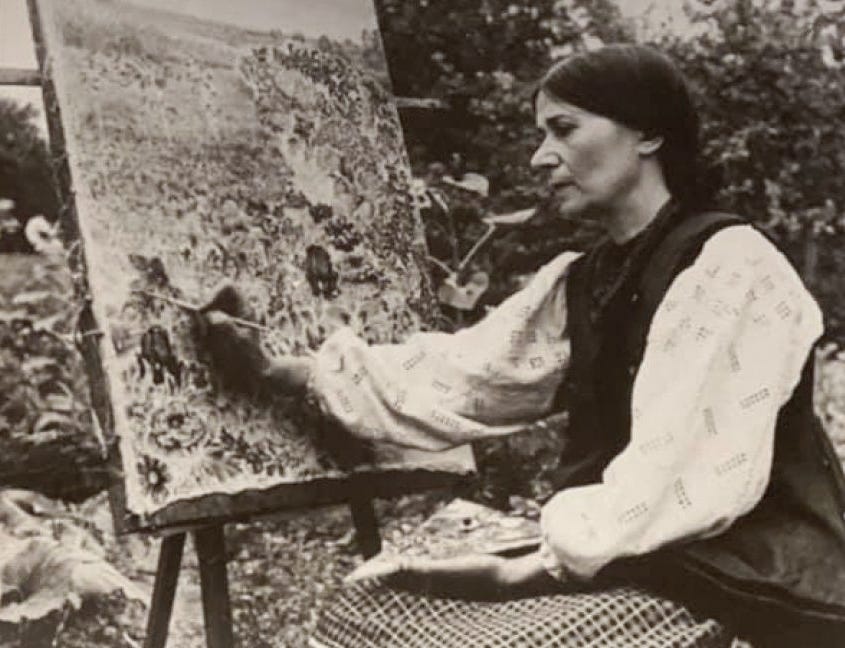

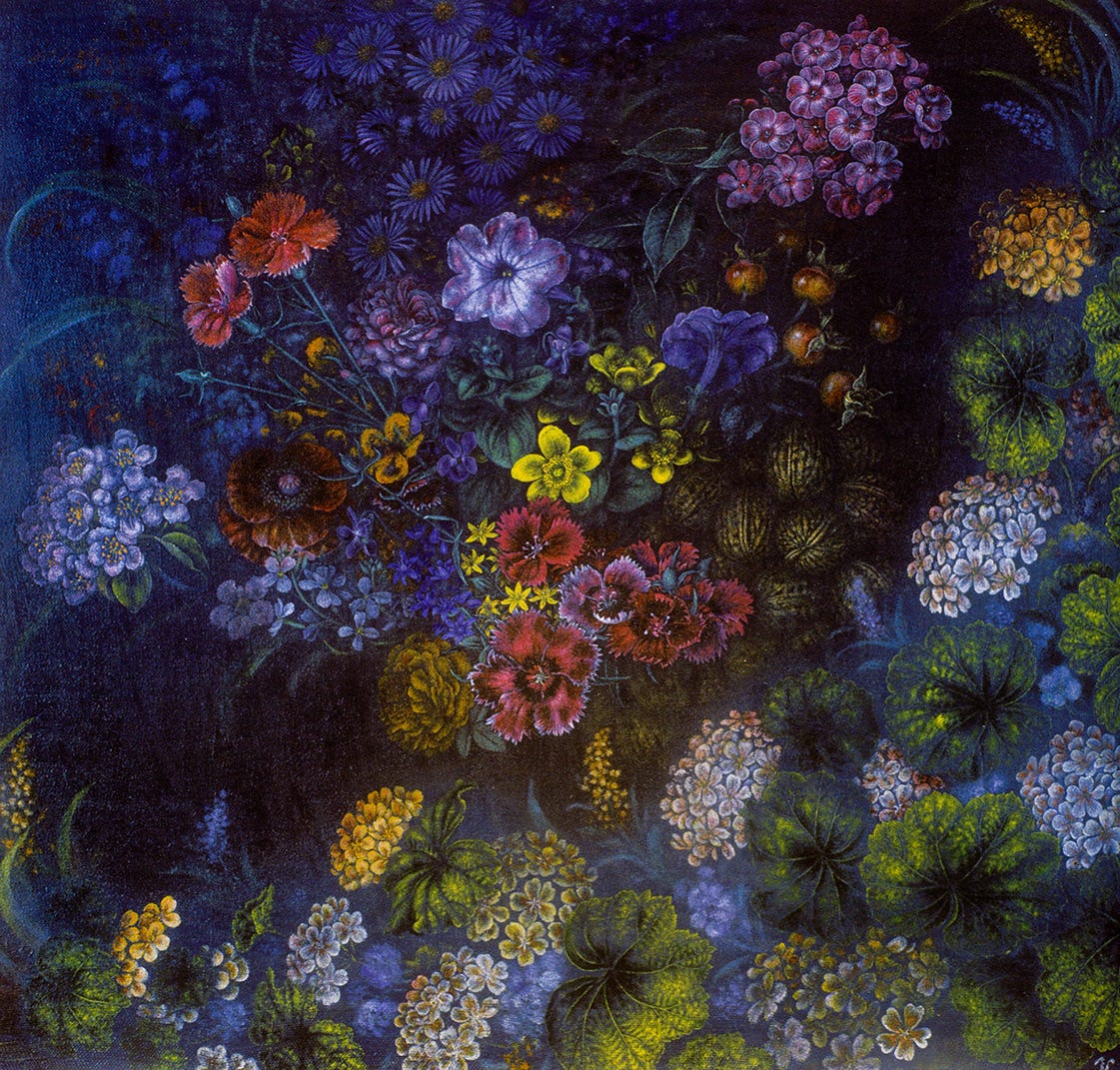

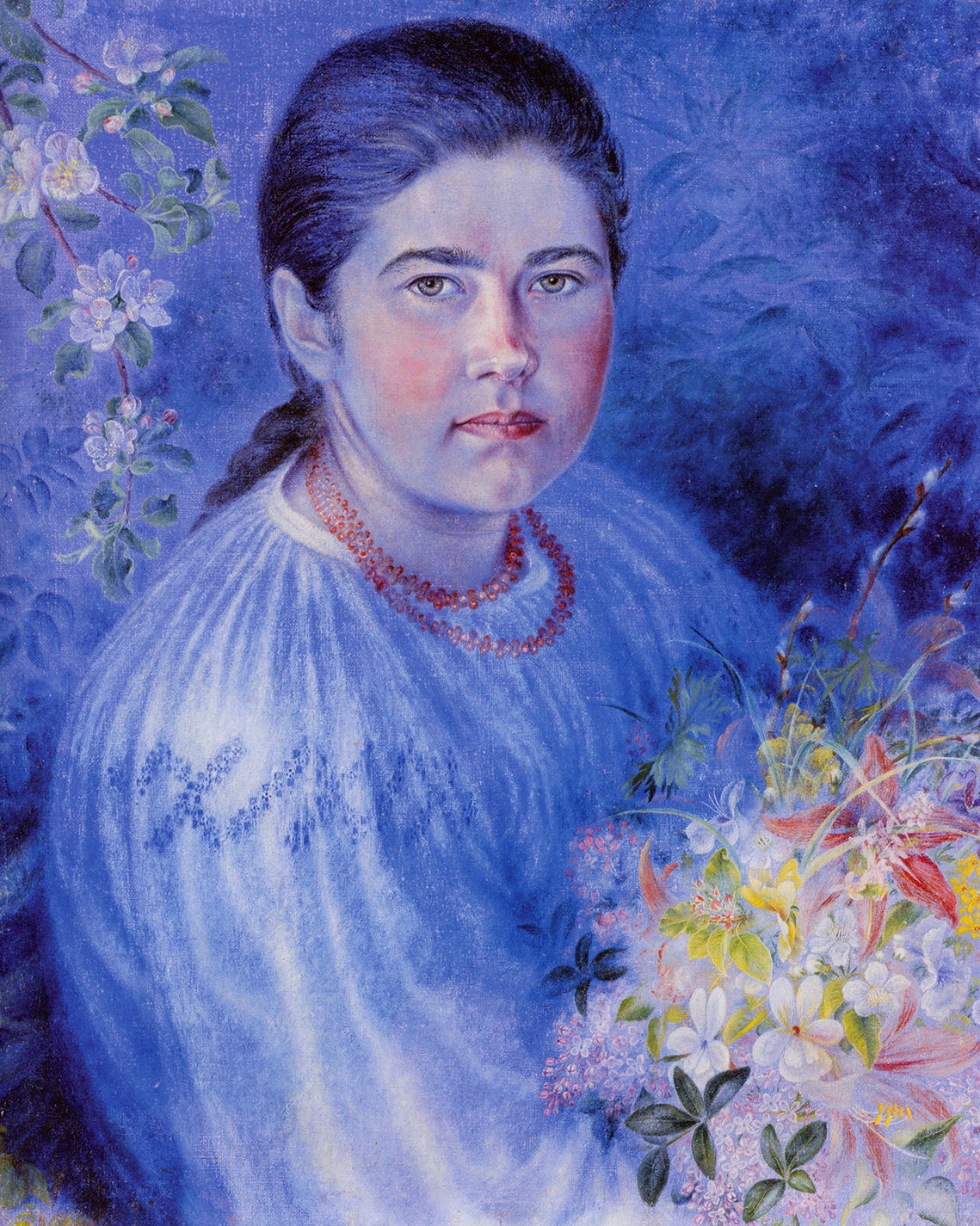

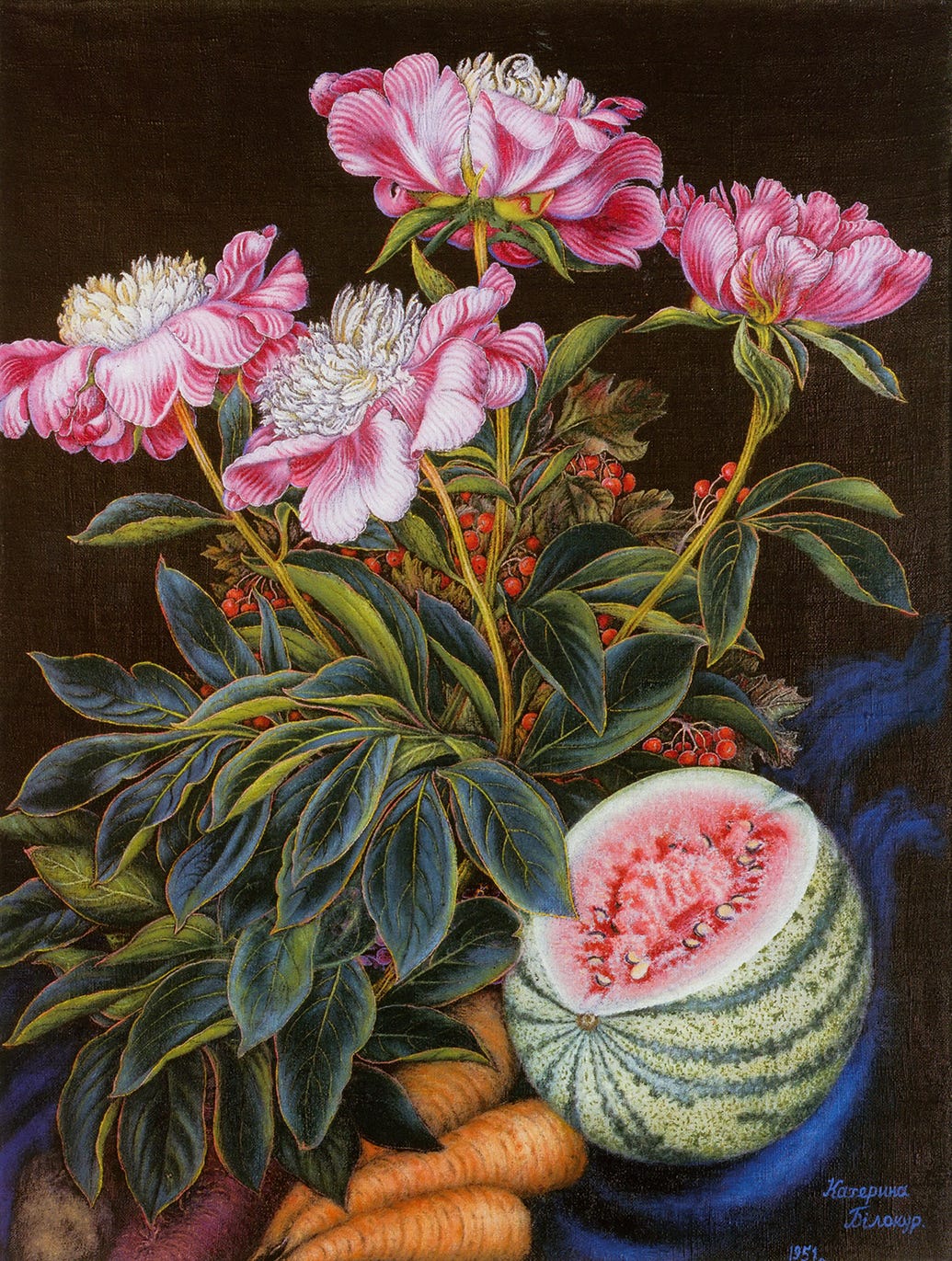
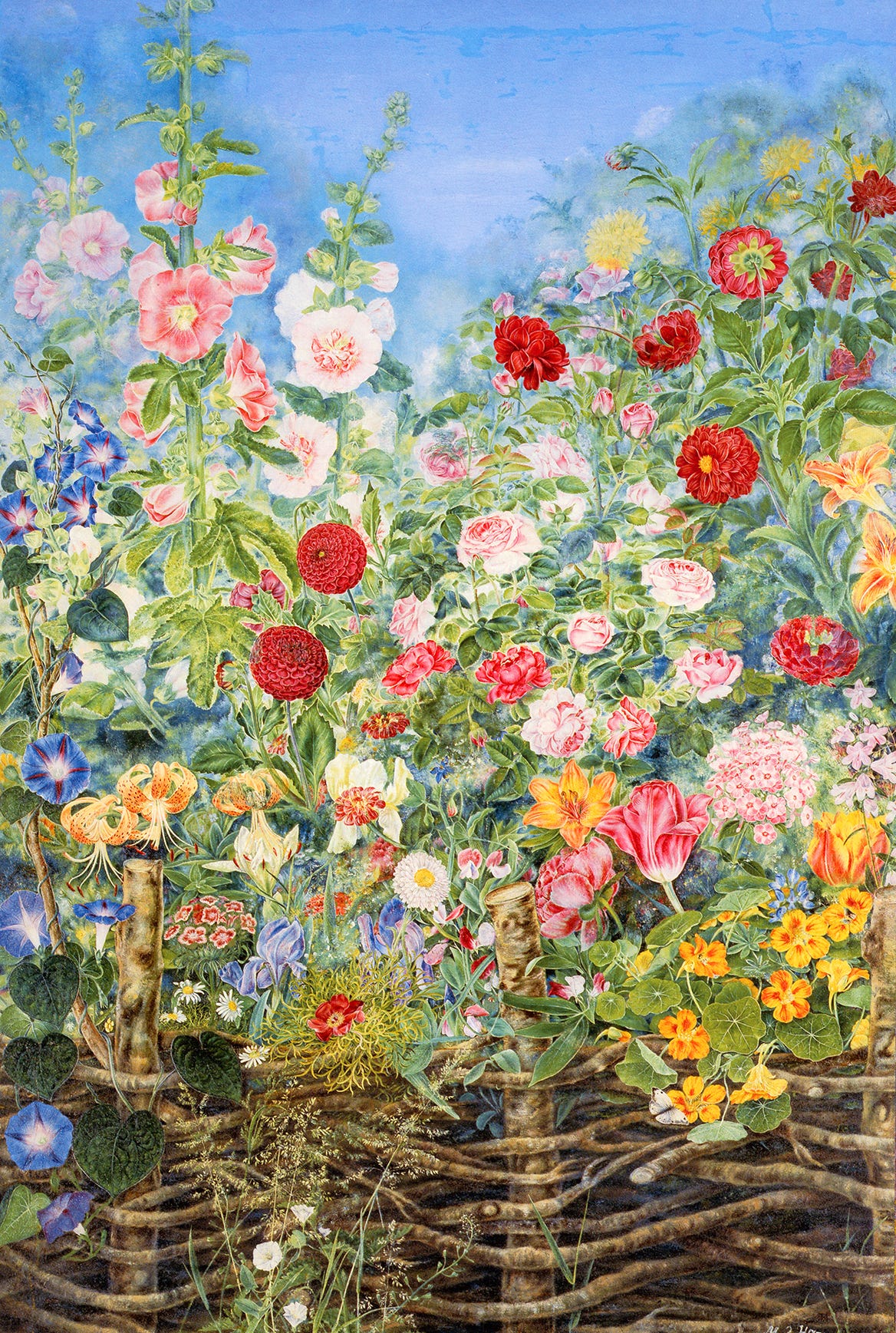







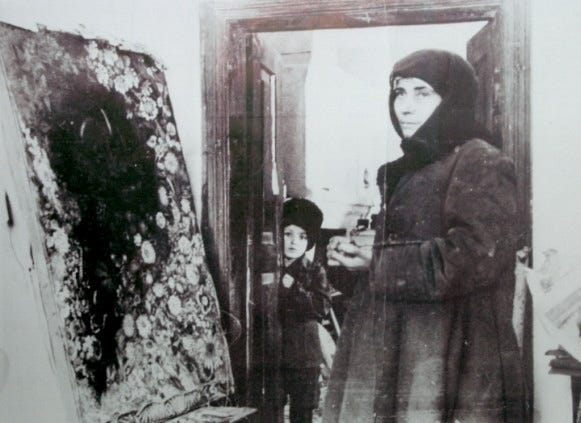
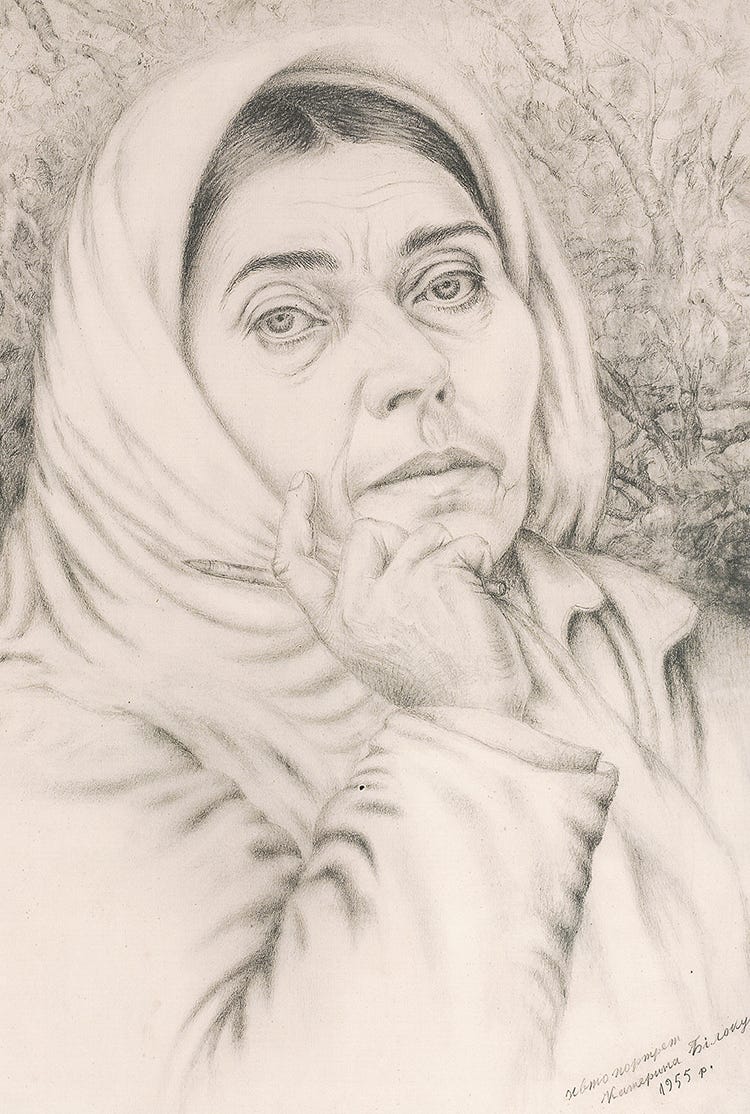

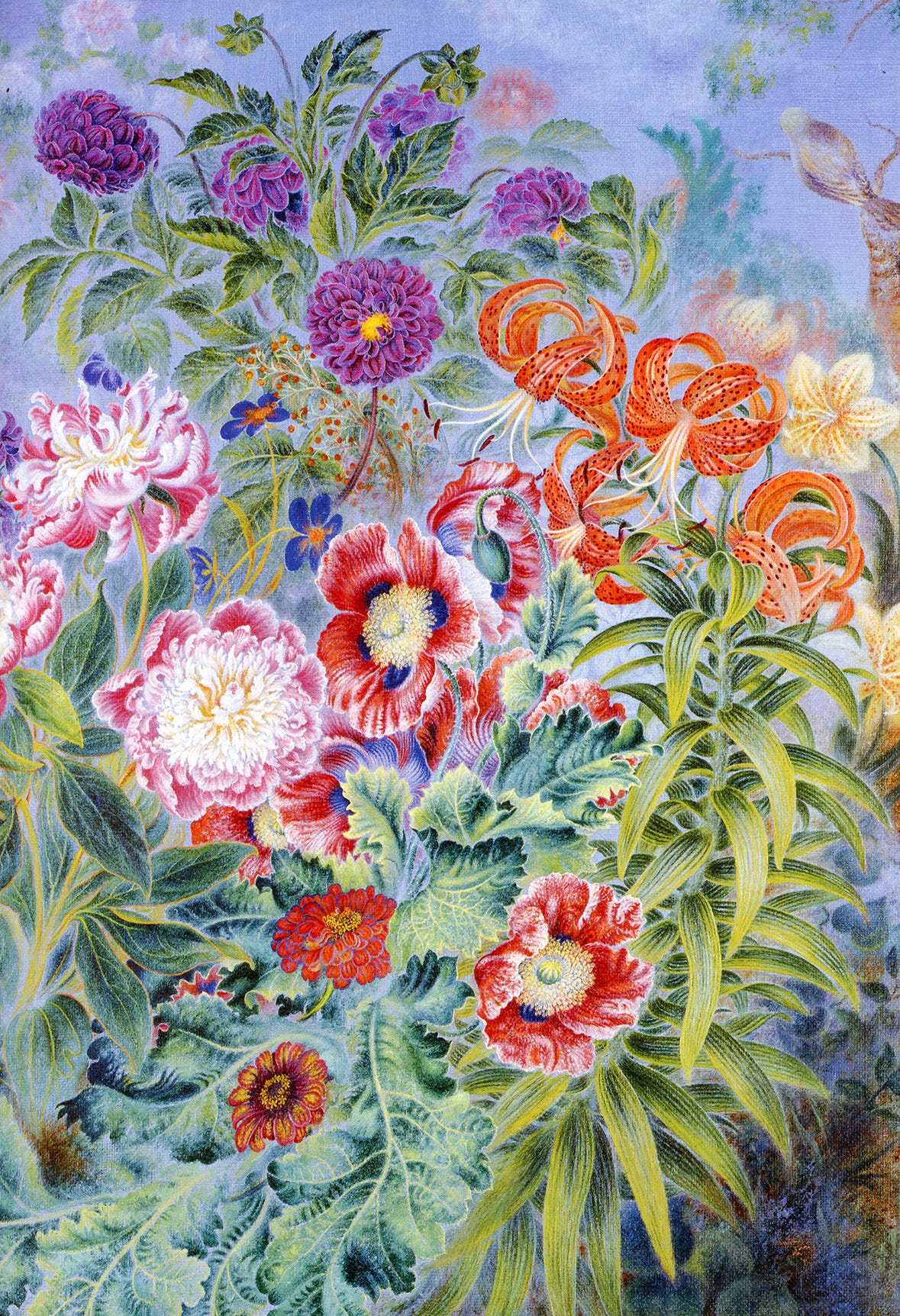
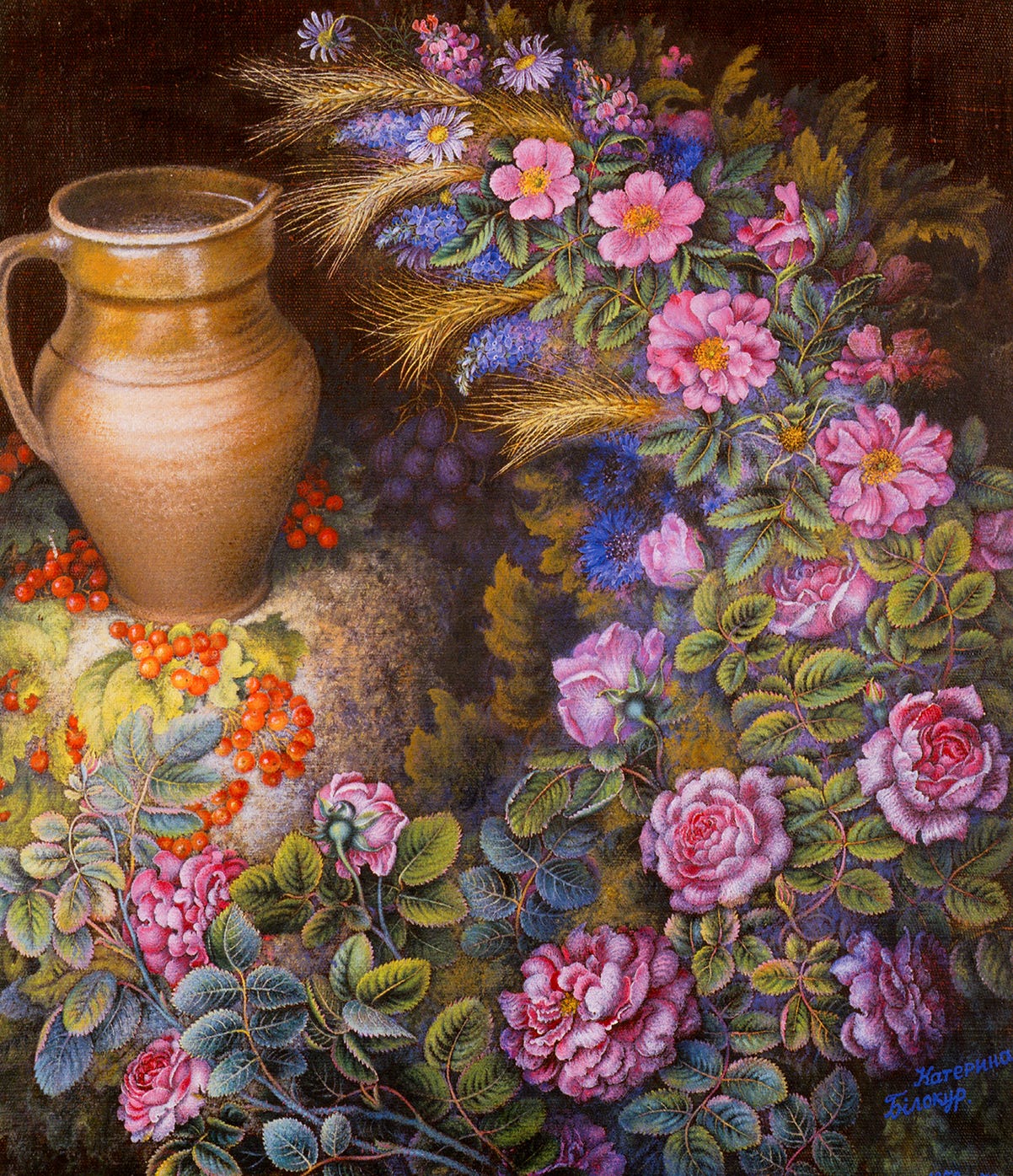
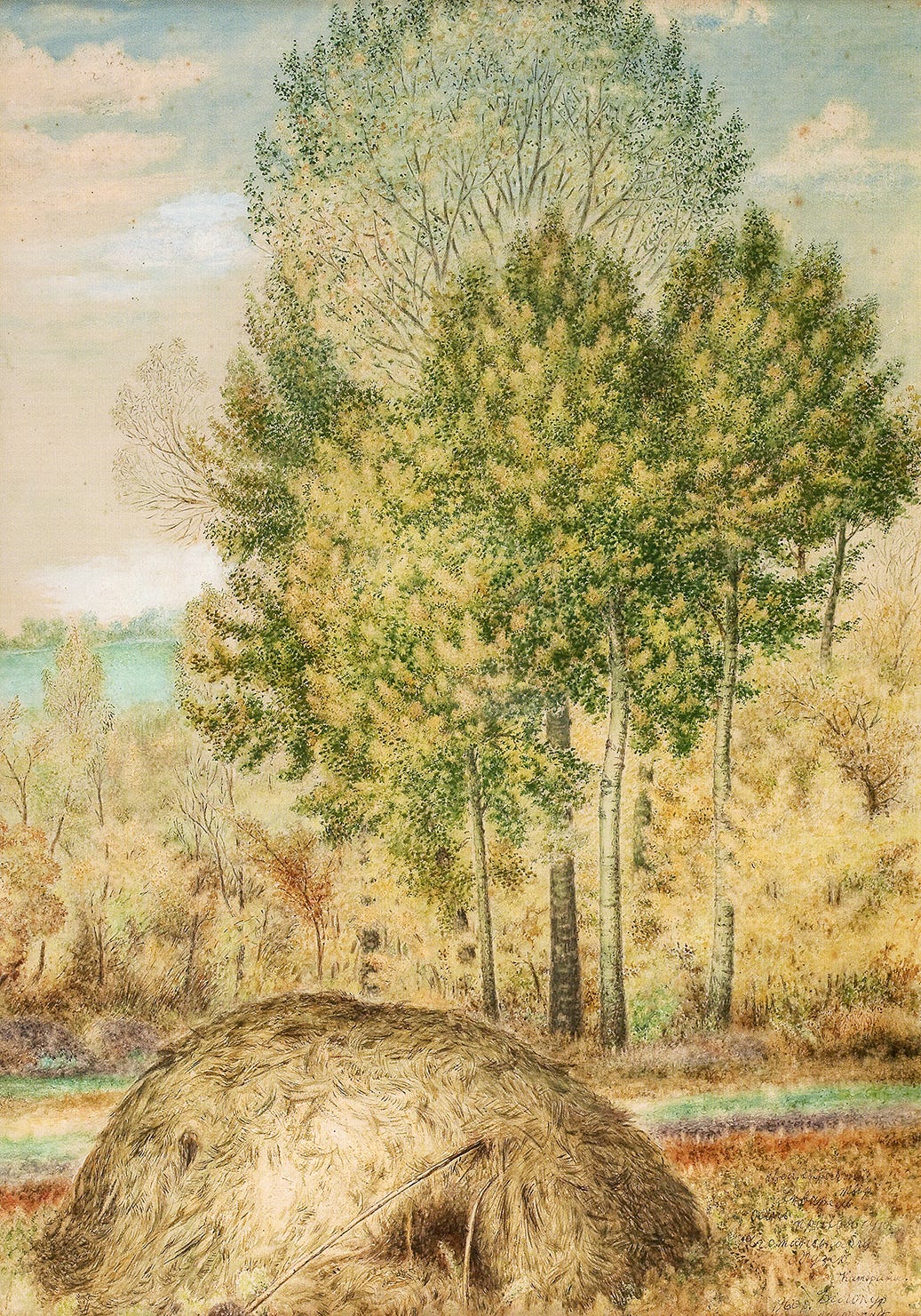
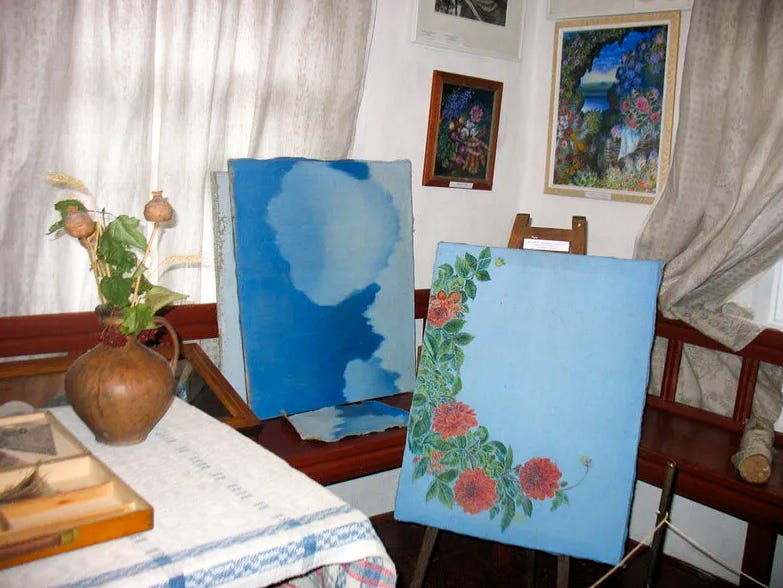
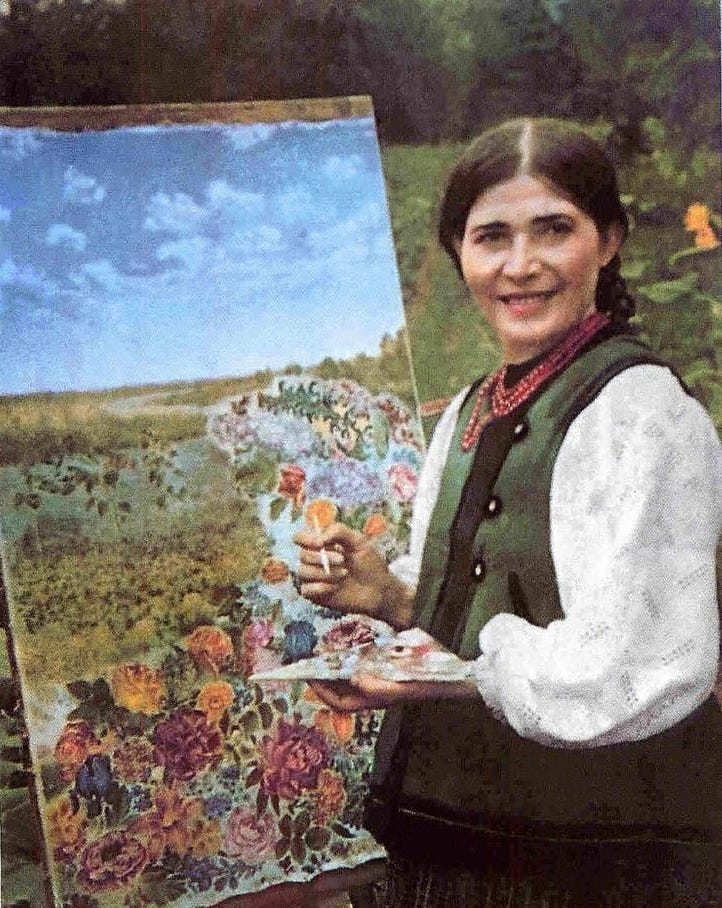

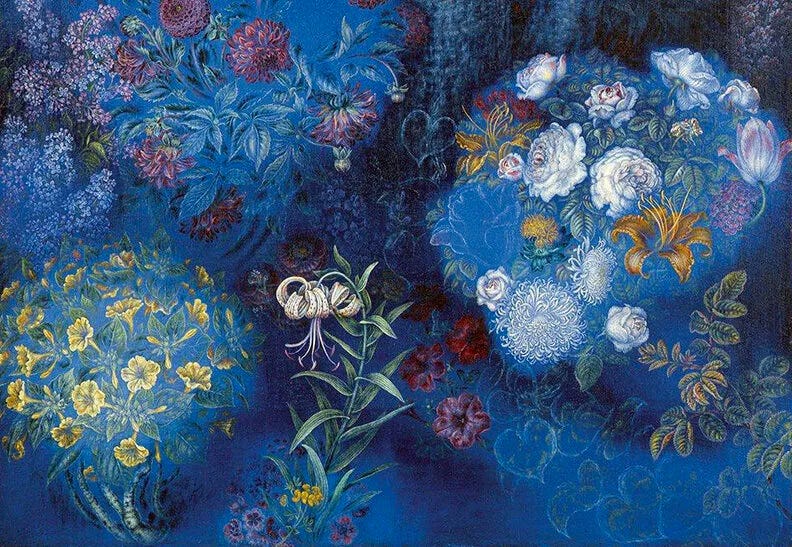
Thank you for a wonderful story on the endurance of a human spirit, and the beautiful artwork.
Every painting is almost more beautiful and vibrant than the last. That she made her own paints just amazes me.
What a hard, horrible life she had. I'm glad she found some solace in painting and in the beauty of nature. Something, at least.n